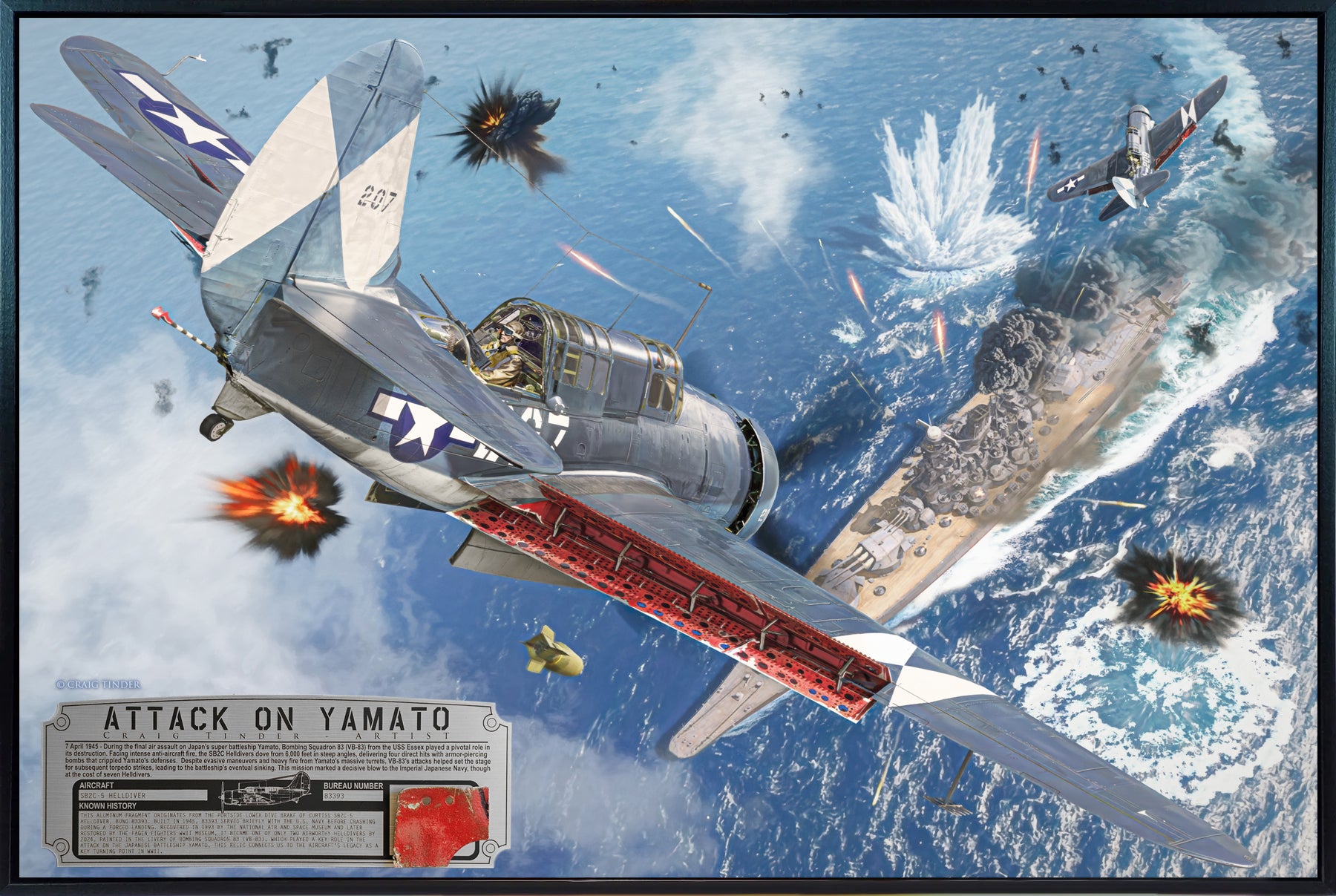











SB2C Helldiver - The Attack on Yamato Canvas | INCLUDES: Dive Brake Fragment

SB2C Helldiver - The Attack on Yamato Canvas | INCLUDES: Dive Brake Fragment
If you have any questions, you are always welcome to contact us. We'll get back to you as soon as possible, within 24 hours on weekdays.
Shipping Information
Use this text to answer questions in as much detail as possible for your customers.
Customer Support
Use this text to answer questions in as much detail as possible for your customers.
FAQ’s
Use this text to answer questions in as much detail as possible for your customers.
Contact Us
Use this text to answer questions in as much detail as possible for your customers.
Description
About the Relic & Process
This fragment of aluminum is a rare relic from the portside, lower dive brake of a Curtiss SB2C-5 Helldiver, Bureau Number 83393. The dive brake, painted in its distinctive red, was critical in controlling the steep, precision bombing dives that made the Helldiver a formidable weapon during World War II.
Built in 1945, SB2C-5 Helldiver 83393 served briefly with the U.S. Navy before it was lost in a crash during a forced landing on July 24, 1945. The wreckage was recovered by the National Air and Space Museum in 1993 and used as a source of parts for other restoration projects. In 2006, the Fagen Fighters WWII Museum in Minnesota acquired the remaining pieces of 83393 and began an extensive restoration.
 SB2C-5 Helldiver BuNo 83393 Port Outboard Dive Brake removed during 2022 restoration
SB2C-5 Helldiver BuNo 83393 Port Outboard Dive Brake removed during 2022 restoration Upclose detail of divebrake. This original part was used as a template in the fabrication of new divebrakes
Upclose detail of divebrake. This original part was used as a template in the fabrication of new divebrakes
By 2024, the aircraft was fully restored and became only the second airworthy Helldiver in existence. It was painted in the livery of Bombing Squadron 83 (VB-83), a unit that played a significant role in the April 1945 attack on the Japanese battleship Yamato.
 Much of the original red paint is still intact
Much of the original red paint is still intact
Disclaimer
By purchasing from Aces In Action, you acknowledge that the product may vary slightly from the images on our website. We use authentic materials from military vehicles and relics, which may contain potentially hazardous substances. These items are not intended for ingestion, inhalation, or use by children. Aces In Action is an independent company, unaffiliated with or endorsed by any other organization. All names, logos, and trademarks are the property of their respective owners and are used for identification only, in accordance with the Lanham Act. Their use does not imply any official endorsement.
